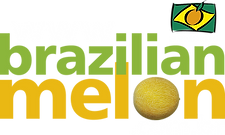


The colors and tastes of Brazil
-
Brazil is the biggest country in Latin America, covering almost half (47.3%) of South America.
-
Its 8.5 million km2 make it the world’s 5th largest country after Canada, the Russian Federation, China and the United States.
-
It is 4,300 km wide, from east to west, and 4,400 long, from north to south.
-
It has 388 million hectares of fertile and highly productive land, of which 90 million have still not been explored.
-
It has a population of 190.6 million in habitants, of whom 97.5 million are economically active.
-
The country has borders with French Guyana, Suriname, Guyana, Venezuela and Colombia, to the north, Uruguay and Argentina, to the south and Paraguay, Bolivia and Peru, to the west. Ecuador and Chile are the only two countries on the South American continent that do not have a frontier with Brazil.
-
The Atlantic Ocean extends along the whole of the east of the country, providing 7,367 km of coastline.
-
The Equator runs through the north of the country and the Tropic of Capricorn through the southeast.
-
Portuguese is the national language, but the accent and intonation are very different from what is heard in Portugal and other former Portuguese colonies.
-
It is the world’s biggest exporter of various commodities: iron ore, coffee, orange juice, beef, tobacco, chicken and sugar.
-
Brazil has a protected area of 755,500 km². This is bigger than the area of the states of California, Washington DC and New York, together.
-
A ‘green’ country, it has 55,000 vegetable species.
-
In three years Brazil has reduced its carbon dioxide emissions by 1.4 billion tons. This has extended the planet’s rainfall cycle.

To find more
 |
|---|
 |
 |
 |
 |
 |


